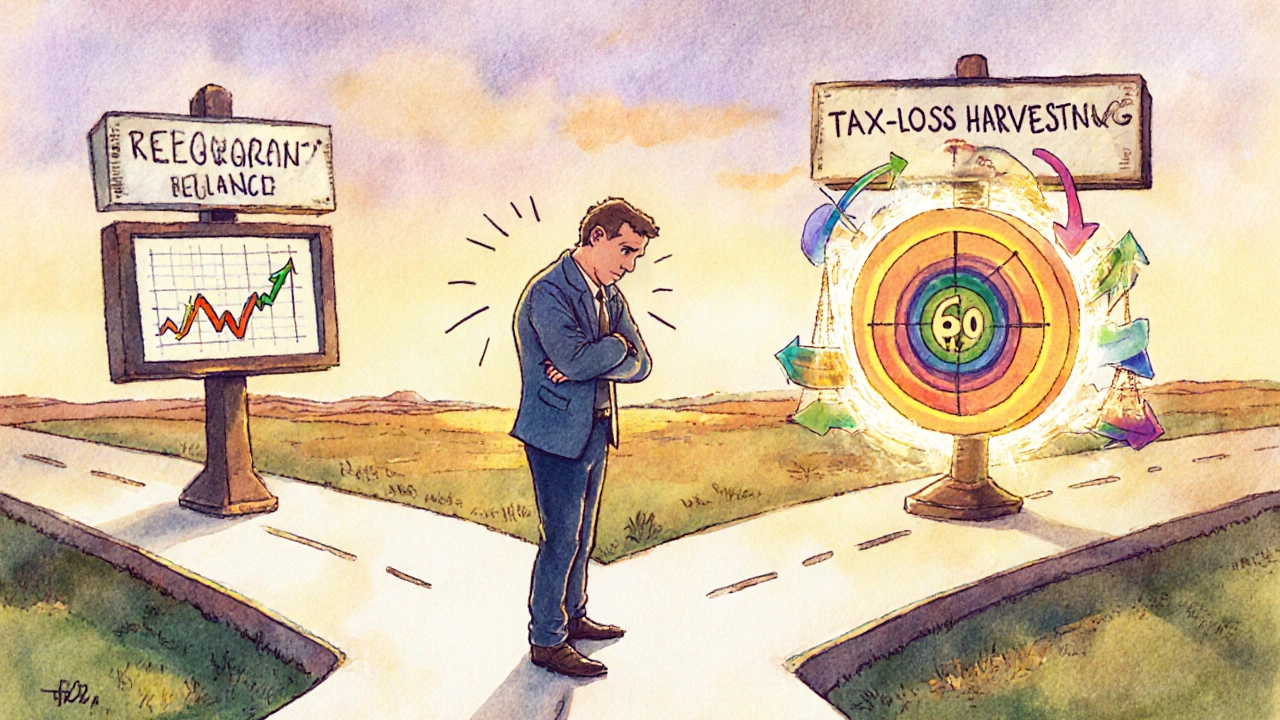Rebalancing Portfolio: How to Stay on Track Without Overpaying or Overtrading
When you invest, your rebalancing portfolio, the process of resetting your asset allocation back to your original targets after market moves cause drift. Also known as portfolio rebalancing, it’s not about timing the market—it’s about sticking to your plan when emotions want you to chase gains or panic-sell. Think of it like setting your GPS after a detour. The road changed, but your destination didn’t. If you started with 60% stocks and 40% bonds, and stocks surged, now you’ve got 70/30. That’s more risk than you signed up for. Rebalancing brings you back.
Most people think rebalancing means selling everything and starting over. It doesn’t. You can do it partial rebalancing, adjusting only part of your portfolio’s drift to cut costs and taxes—like fixing 60% of the imbalance instead of 100%. That’s what smart investors do to avoid unnecessary trades. And it works. One study showed that rebalancing just 50-75% of the drift kept risk under control while reducing trading costs by nearly half. You don’t need to be perfect. You just need to be consistent.
Where you hold your assets matters too. If you’re selling stocks in a taxable account, you might owe capital gains tax. But if you rebalance inside a Roth IRA or 401(k), you can trade freely without tax hits. That’s why asset location strategy, putting the right investments in the right accounts to maximize after-tax returns is part of smart rebalancing. You’re not just adjusting weights—you’re optimizing where those adjustments happen.
And it’s not just about stocks and bonds. If you’ve got crypto, REITs, or international funds in your mix, those can swing wildly. A 5% crypto position can turn into 15% overnight. That’s not luck—that’s drift. Rebalancing pulls it back. You don’t have to check daily. Quarterly or twice a year is enough for most people. Set a reminder. Use automation if your platform offers it. The goal isn’t to outsmart the market. It’s to outlast it.
Some think rebalancing is only for big portfolios. It’s not. If you’re investing $500 a month, you can still rebalance by directing new money into the underweighted side. No selling needed. That’s how beginners start. That’s how pros keep it simple. You don’t need fancy tools. You need a plan and the discipline to follow it.
What you’ll find below are real strategies from people who’ve done this—without the jargon, without the hype. From how to spot when your portfolio’s gone off track, to which platforms make it easy, to why some rebalancing methods cost you more than they save. You’ll see how others use partial rebalancing, how they tie it to tax-efficient accounts, and how they avoid common mistakes that eat into returns. No fluff. Just what works.
Tax-Loss Harvesting While Rebalancing: How to Coordinate Moves for Better After-Tax Returns
Tax-loss harvesting while rebalancing lets you cut your tax bill while fixing your portfolio’s allocation. Learn how to do it right, avoid wash-sale traps, and boost after-tax returns by up to 1% a year.
View More